はじめに|“足指と足首”はつながっている?
こんにちは。足指研究家の湯浅慶朗です。
足首の捻挫は、ちょっとした段差や着地のズレでも起こる身近なケガのひとつです。
実はこの足首の不安定さや繰り返す捻挫に、「足指の変形や使い方」が関係している可能性があることをご存知でしょうか。
足指の構造が崩れると、歩行時や運動時に地面からの力をうまく分散できなくなり、バランスをとるための動きに乱れが生じやすくなります。特に小指側への体重の偏りは、足首の内反(内側にひねる動き)を助長しやすく、捻挫リスクの一因となることがあります。
本記事では、理学療法士として10万人以上の足と姿勢を診てきた経験から、「足指と足首の捻挫の関係性」について詳しく解説します。
さらに、捻挫の再発を防ぐために日常で見直したい靴選び・靴下の素材・足指のセルフケアについても紹介します。
足首に不安を抱えている方や、何度も捻挫を繰り返している方にとって、構造的な視点から“原因”と“対策”を考える一助になれば幸いです。
※この記事は治療法を断定するものではなく、体の仕組みや足元環境の影響を知るための参考資料としてご活用ください。
概要|捻挫は“誰にでも起こる”身近な関節損傷——でも“繰り返す人”には共通点がある
足首の捻挫(ねんざ)は、歩道の縁石を踏み外したとき、階段を下り損ねたとき、スポーツ中の着地や急な方向転換など、日常生活や運動中のふとした動きで誰にでも起こりうる関節障害です。
足関節は本来、靱帯によって前後左右に安定化されていますが、「ひねる」「よじれる」「片側に体重が集中する」といった負荷がかかると、外側の靱帯(特に前距腓靭帯)に過剰なストレスが生じ、伸張や断裂が発生します。
特に内反(内側にひねる)方向にズレやすく、関節の外側に集中する靱帯が損傷しやすいのが特徴です。
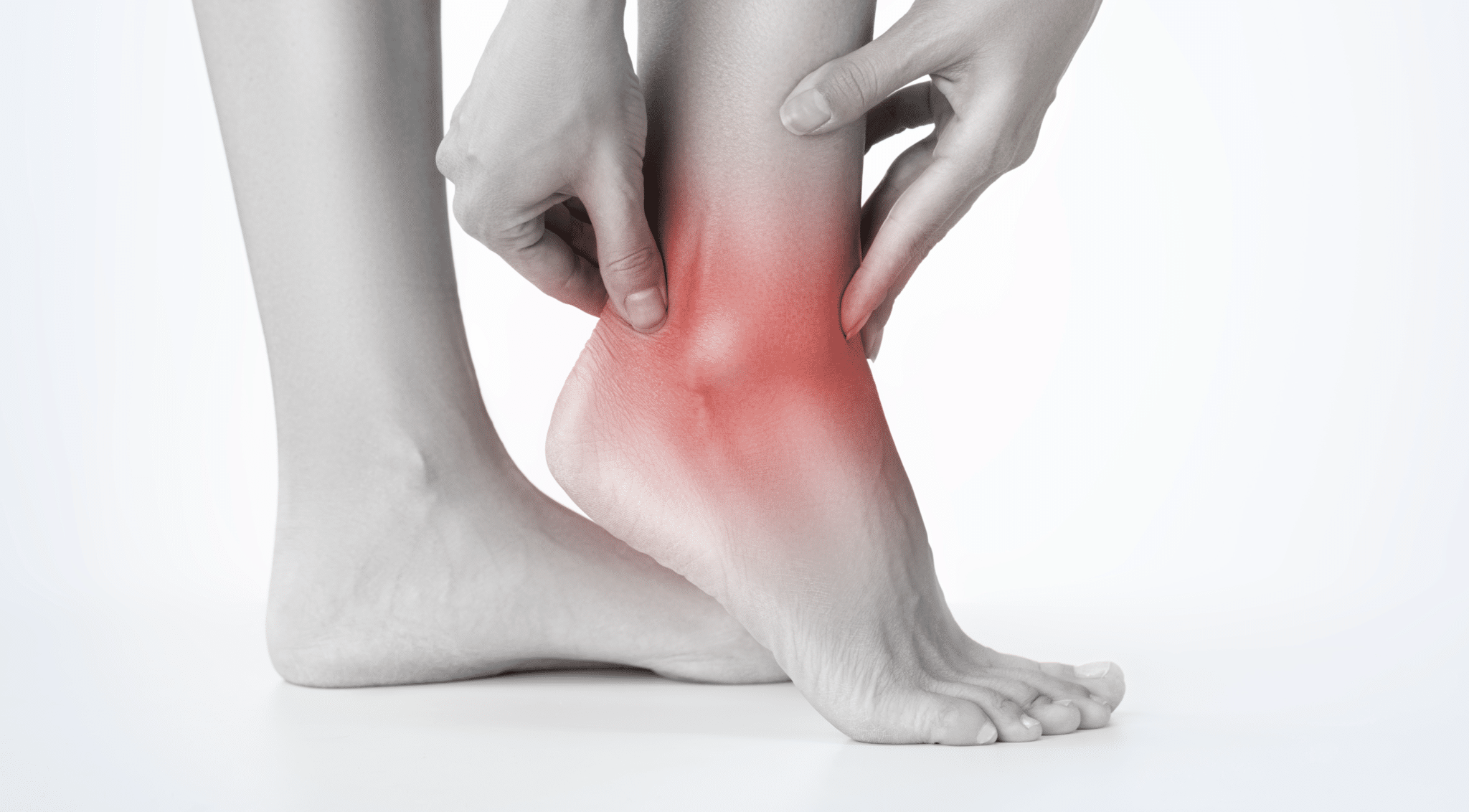
なぜ捻挫はこんなに多いのか?
捻挫はスポーツ選手に限らず、中高年層や高齢者にも非常に多く、転倒事故やふとした段差によって起こるケースもあります。歩き慣れた場所であっても、足元の感覚や反応が鈍っていると一瞬で関節にダメージが及びます。
初期対応の基本は「安静・冷却・圧迫・挙上」
一般的な足関節捻挫は、アイシングや湿布、サポーター固定、簡易な運動療法などの保存的な処置で経過をみることが多く、軽症であれば2〜4週間ほどで日常生活に復帰できるケースもあります。
ただし、以下のような場合には整形外科などでの精査が必要です。
- 数日経っても腫れや痛みが引かない
- 足をつくと鋭い痛みが走る
- 関節のぐらつき感がある
- 階段の昇降ができない、歩行が困難
“治るはずの捻挫”が再発・慢性化する理由
保存的に対処しても、数週間〜数ヶ月にわたって違和感や不安定感が残る人も少なくありません。その背景には、
- 靱帯の伸び残り(緩み)
- 本来の支持構造(足趾・足底筋)の不全
- 重心のアンバランス
- 靴や足指環境の影響
といった“構造的な要因”が潜んでいることもあります。
事実、私がこれまで臨床で見てきた捻挫リピーターの多くは、「足指、とくに小趾の機能不全や変形」が見られました。
再発防止には「足指・足元」からの見直しが不可欠
靴の構造、靴下の摩擦・圧力、足指の柔軟性、足裏の接地感覚——これら**“足首より下の環境”**が安定していなければ、どれほどリハビリやトレーニングを行っても、再発のリスクを完全に取り除くことは難しいと感じています。
足首捻挫を単なる“ケガ”として捉えるのではなく、「カラダ全体の構造的バランスの崩れ」として捉え直すことが、再発予防・長期的な健康維持への第一歩になると私は考えています。
症状|足首捻挫のサインと“進行度”の見分け方
足首の捻挫(ねんざ)と一口に言っても、その重症度や症状の出方は人によって異なります。ここでは、捻挫の典型的なサインと、どの程度の損傷が起きているのかを見極める目安をご紹介します。
・痛み、特に患部の足に体重がかかると痛む
・足首を触ると圧痛がある
・腫れ
・あざ
・可動範囲の制限
・足首の不安定性
・受傷時のパキパキとした感覚や音がする
日常生活やスポーツ中、こうした症状が突然現れた場合は、足首周囲の靱帯に何らかの損傷が生じている可能性があります。
捻挫の“重症度分類”と回復目安
整形外科の臨床現場では、足関節の捻挫は以下のように分類されることが一般的です。ここでは、靱帯損傷の程度と回復目安を簡単にまとめました。
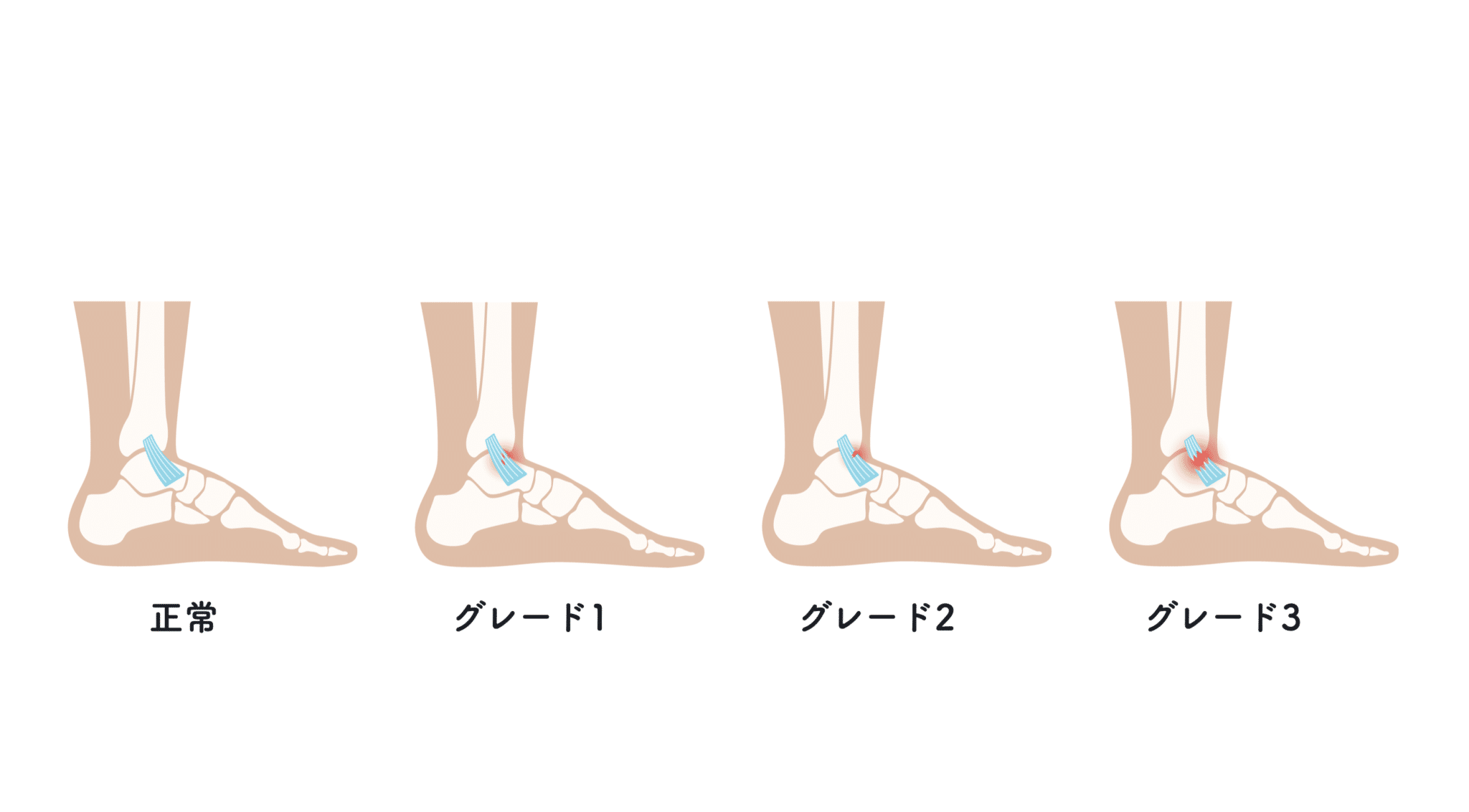
| グレード | 靱帯の損傷 | 主な症状 | 回復期間の目安 |
|---|---|---|---|
| Grade 1 | 靱帯が一時的に伸びた状態 | 軽度の腫れ・圧痛。歩行可能なことが多い。 | 約1〜3週間 |
| Grade 2 | 靱帯の部分断裂 | 痛みが強く、関節の不安定感あり。歩行困難。 | 約3〜6週間 |
| Grade 3 | 靱帯の完全断裂 | 関節が大きく不安定になり、自力歩行困難。 | 約6〜12週間、もしくは長期化する場合もあり |
“軽度”と油断しないで
軽傷のように見えても、**正しい処置やリハビリが行われないと、靱帯が緩んだまま不安定性が残るケースもあります。**その結果、再発リスクが高まり、足首の構造自体が崩れていくこともあるのです。
とくに「足がよくグネる」「昔から捻挫しやすい体質だと思っていた」という方は、足指の変形や重心の偏りが隠れている可能性があります。
原因・発症のメカニズム
原因・発症のメカニズム
発生要因|なぜ“足の小指”が捻挫の引き金になるのか?
足関節の外側には、3本の靭帯——
- 前距腓靭帯(ぜんきょひじんたい)
- 踵腓靭帯(しょうひじんたい)
- 後距腓靱帯(こうきょひじんたい) が存在しており、これらは足首の安定性を保つ要(かなめ)となっています。
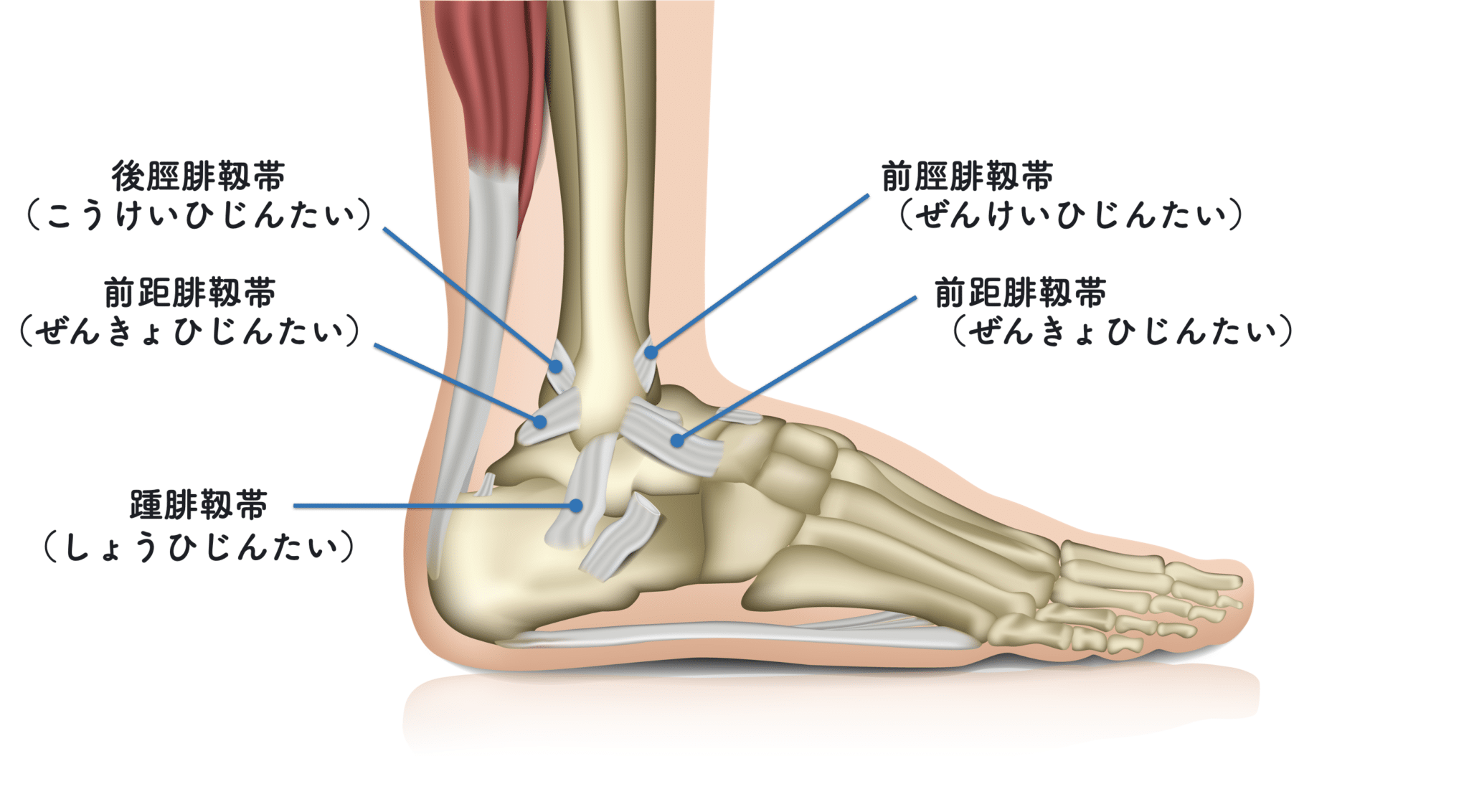
中でも最も損傷しやすいのが 前距腓靭帯 であり、内側に足首をひねる「内反捻挫」により断裂することがほとんどです。内反捻挫は、全体のおよそ9割を占めるとも言われています。
足首の捻挫につながるシチュエーション
捻挫を引き起こす具体的な動作には、以下のようなものがあります。
- 歩道の縁石などで足をひねって転倒
- スポーツ時のジャンプや回転後、不安定な着地
- 凹凸のある地面での移動やランニング
- 他者との接触(踏まれる・押される)によるバランス崩れ
これらはいずれも「予期しない不安定な状況下」で起こるものですが、身体の構造的弱点があると、わずかなきっかけで大きな損傷につながるリスクがあります。
足の小指の“構造的弱点”がリスクになる
私がこれまで10万人以上の足と歩行を見てきた中で、足首を捻挫しやすい方の多くに共通していたのは、次の特徴です。
こうした 「小指の変形」や「小指の機能不全」は、重心が外側に流れやすくなり、バランスを支える力が足りず、踏ん張りが効かなくなるのです。
さらに、足首の外側をサポートする「腓骨筋(ひこつきん)」が弱い人では、この傾向がより顕著になります。
踏ん張れない足指は、足首を守れない
足は通常、自分の体重の5倍以上の負荷に耐えられる“踏ん張り力”を備えています。しかし足指が変形し、特に小指の支えが失われていると、その力を発揮できず、自分の体重すら支えきれなくなります。
その結果、ジャンプ後の着地や、段差でのバランス崩れなど、“ほんのわずかなズレ”が大きな捻挫へとつながってしまうのです。
メカニズム|小指が使えないと、なぜ足首は“内側にひねる”のか?
足首の捻挫は、ただの偶然や「運動不足」ではありません。
私の臨床経験から見えてきたのは、足指、特に“小指”の機能不全が発端となり、身体全体のバランスが崩れた結果として起こるという構造的な連鎖でした。
このような「下から上へ崩れていく身体の連鎖」は、私が提唱している Hand-Standing理論(ハンド・スタンディング理論) に基づいて説明できます。
Hand-Standing理論では、人の身体構造を「手で逆立ちした状態」として捉え、足指を“指先”、足首を“手首”、体幹や肩を“上流の関節”と考えます。
つまり、足指という最も末端の支持点が不安定になると、その影響は重心・関節配列を通じて、足首や膝といった上位関節に集中しやすくなる、という考え方です。
構造的には、次のような流れで足首の捻挫は引き起こされます。
❶ 靴の種類・履き方
↓
❷ 足指の変形(特に内反小趾)・小指の機能不全
↓
❸ 外側重心(=重心が小指側に傾く)
↓
❹ 足首の内反傾向(回外足・過回内足)
↓
❺ 捻挫(内反捻挫の誘発)
足指の役割分担とは?
人間の足指には、それぞれに明確な役割があることをご存じでしょうか?
| 足指 | 主な役割 |
|---|---|
| 親指(母趾) | 重心が内側にズレた時に中心へ戻す補正力 |
| 小指(第5趾) | 重心が外側にズレた時に中心へ戻す補正力 |
| 人差し指〜薬指(第2〜4趾) | 前方への重心ズレを止めて安定させる力 |
つまり、小指は「外側に倒れそうな重心を食い止めるストッパー」の役割を担っているのです。
「あおり歩行」の中で小指が果たす役割
私たちが普段無意識に行っている「歩行」は、実はとても精緻な動作の連続です。
これを“あおり歩行”と呼び、4つのフェーズに分けて考えることができます。
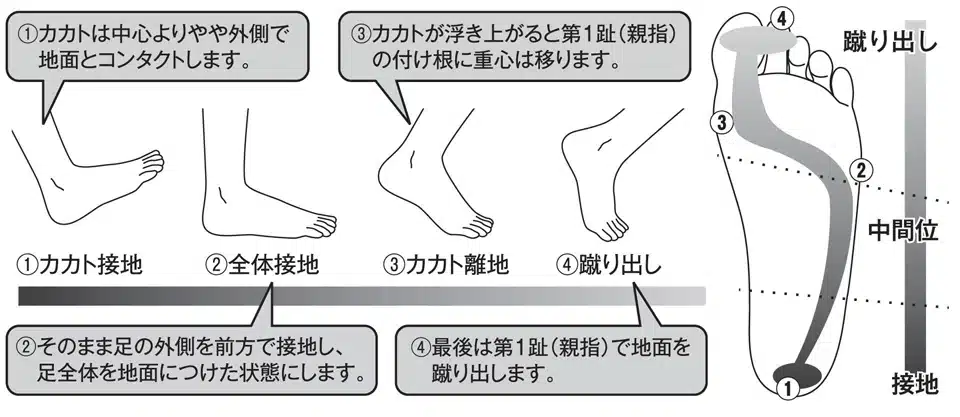
【あおり歩行の4ステップ】
1.親指で地面を蹴り出す(トウオフ)
2.踵で着地(ヒールコンタクト)
3.小指側へ体重が移動(ラテラルロッカー)
4.薬指〜人差し指方向に体重が移動(メディアルロッカー)
このとき、本来であればステップ2で小指がしっかり地面を捉え、重心を内側に戻す役割を果たします。しかし、小指が機能していなかったらどうなるでしょうか?
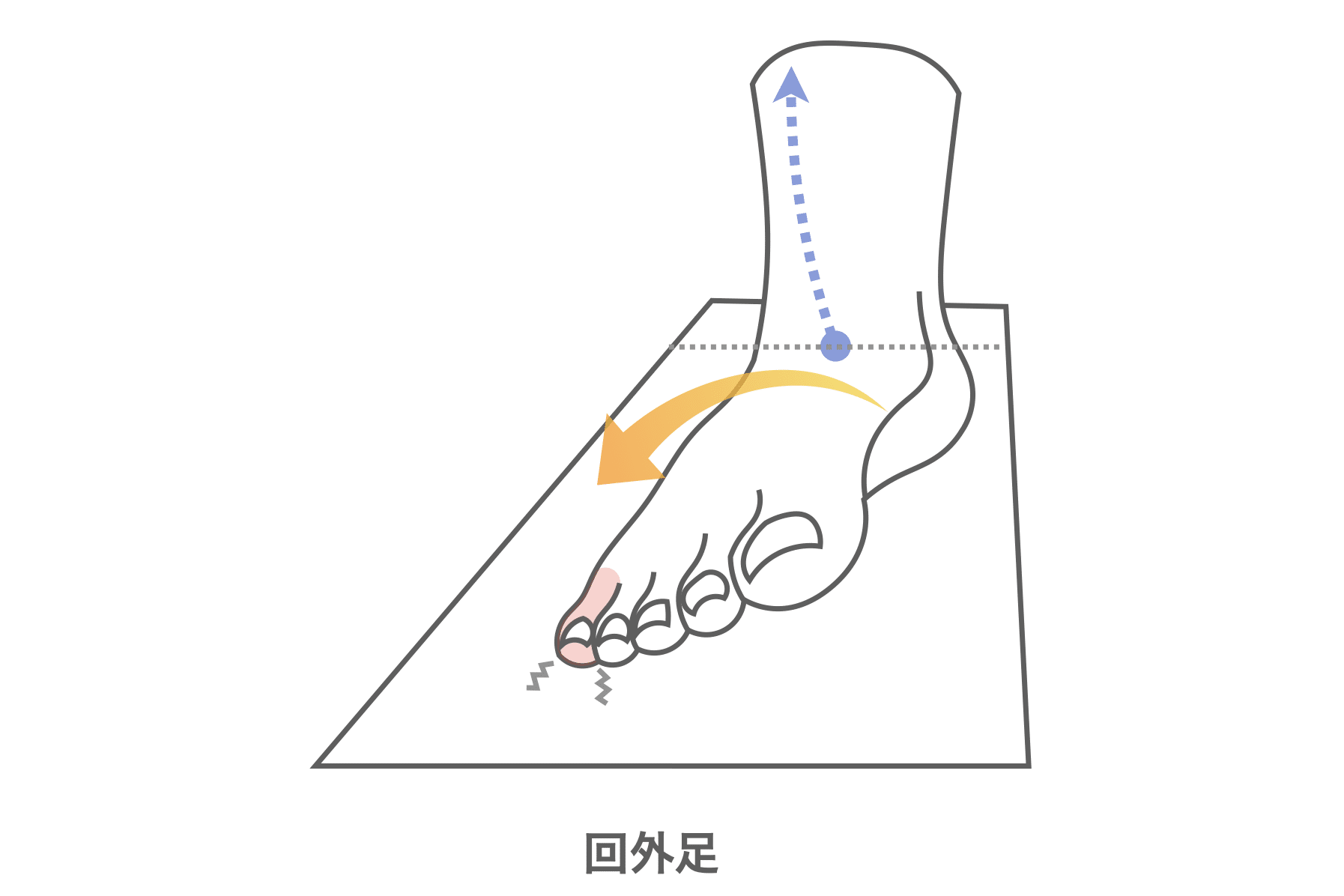
外側に倒れた体重を支えきれなくなると、足首が内側へ“ねじれる”ような形でバランスを取ろうとします。
この状態が、医学的には内反捻挫(ないはんねんざ)と呼ばれるケガのメカニズムです。
つまり、小指が使えない状態が続くことで、足首の構造的な不安定性が生じてしまうのです。
メカニズムを一言でまとめると
「小指で止められなかった重心が、足首を内側にひねらせてしまう」
ということです。
小指が内側に曲がる「内反小趾」、あるいは小指が地面につかない「浮き小指」状態では、
この“止める力”が失われているため、ほんのわずかな段差や方向転換でも捻挫しやすくなるのです。
「ちょっとした段差で…」は偶然ではない
- 駅の階段でつまずく
- 平坦な道路で足をくじく
- スポーツ中にジャンプからの着地でバランスを崩す
こうした場面で捻挫を繰り返す方は、足の構造そのものが“ぐらつきやすい状態”に固定されている可能性があります。
特に、小指が使えていない人ほど、こうしたトラブルが多発する傾向があると私は感じています。
治療しても“再発”する人の共通点とは?
足首の捻挫は、湿布や固定、運動療法などによって徐々に落ち着くケースも多いですが──
中には、
- 「靭帯が緩いままになってしまった」
- 「繰り返し捻挫を起こしてしまう」
- 「痛みが消えない」
というケースもあります。
このような方の多くは、小指の変形や機能不全を抱えたまま、同じ動きを繰り返していることが少なくありません。
結果として、
- 足首に無意識にストレスがかかり続け
- 炎症を繰り返し
- 捻っていないのに“捻挫のような痛み”を感じる
という状態に陥っている可能性があるのです。
POINT|「小指が支えてくれていれば、起こらなかった捻挫」かもしれない
私が日々の臨床で感じるのは、足首のトラブルの根本に“足指の機能不全”があるケースは想像以上に多いということです。
その中でも、小指の使い方が、足首の安定性を大きく左右しているという事実は、
もっと広く知られるべきだと強く感じています。
足指が変形する原因は?|靴・靴下・歩き方が“構造崩れ”をつくる
足首の捻挫(ねんざ)を繰り返してしまう方には、ある“見逃されがちな共通点”があります。
それは、日常的に「足が滑る環境」にさらされていることです。
1|足指を変形させる「足元環境」とは?
私たちが日々使っている靴や靴下の中には、見た目や履き心地ではわからない“リスク要因”が隠れています。
とくに以下のような環境は、足指が正しく機能するのを妨げている可能性があります。
こうした環境では、靴の中で足が滑るのを防ぐために、無意識に足指を「ギュッ」と縮めてブレーキをかける動作が起こります。
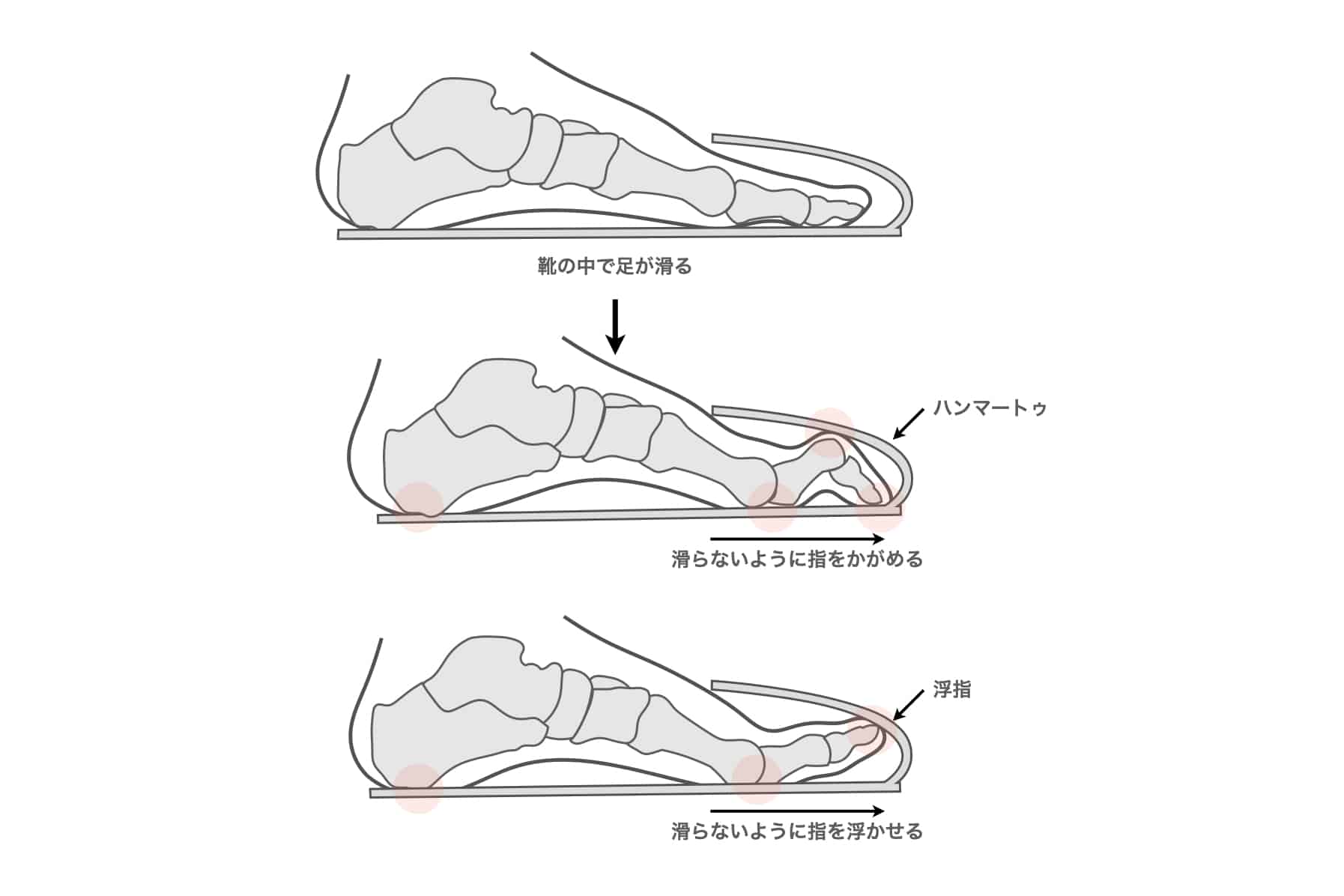
この動きが習慣化すると、「かがみ指(ハンマートゥ)」や「浮き指」といった変形が進行していきます。
2|滑る足元が「足指機能不全」につながる
足が靴の中でズレ続けると、足指は本来の使い方を忘れてしまいます。
具体的には、小指を使って体重を支える・踏ん張る・蹴り出すといった一連の役割が失われてしまうのです。
特に滑りやすい靴下(※綿・シルクに多い「シルケット加工」など)の場合、以下のようなリスクが生まれます。
- 足指に4〜9gf/cm²の圧力が加わり、指を締めつける
- 靴下の中で足がズレやすくなる
- 無意識に「足指を曲げるクセ」が強まる
- 結果として、浮き指・かがみ指・内反小趾などの変形が起こる
さらに、「ブカブカの筒型ソックス(チューブソックス)」も注意が必要です。
足がズルズルと前後に滑ることで、これもまた足指にとってのストレス環境となります。
3|変形は“筋力低下と構造の崩れ”を引き起こす
足の骨は、細かい筋肉の支えによって正常な位置を保っています。
その多くが「足指」につながっているため、足指が使えなくなると次のような“構造的崩れ”が起こります。
- 小指が内側に曲がる(内反小趾)
- 親指が外に曲がる(外反母趾)
- 足のアーチが潰れる(開帳足・扁平足)
- 足の外側に重心が傾く
- 足首が内反しやすくなる
これらの流れによって、「ちょっとした段差」でも捻挫を起こしやすい状態が作られてしまうのです。
4|“足が滑らない環境づくり”が再発予防の鍵
私の臨床経験上、足首の捻挫を何度も繰り返す方は、足指の変形を放置しているケースが非常に多いです。
これはつまり、「構造的にぐらつきやすい足」であるということ。
湿布やサポーターなどの一時的な対処では、再発リスクを下げることは難しいと感じています。
だからこそ必要なのが、「足指の再教育」と「滑らない環境づくり」です。
POINT|足指が安定すれば、足首も安定する
病院でのリハビリや筋力トレーニングも有効ではありますが、
外側に倒れやすい“足の構造”がそのままでは、再発は防げません。
- 足指がしっかりと広がり
- 地面をとらえられる状態で
- 靴の中でもズレずに安定している
このような“構造的にブレない足”をつくることが、
結果的に足首の捻挫を防ぐ本質的な対策になるのです。
セルフチェック|あなたの足首は“捻挫しやすい構造”かもしれません
足首の捻挫を防ぐためには、「転びやすさの原因が自分の足にあるかどうか」を把握することが第一歩です。
見落とされがちな足の小指や足首のアライメント(骨の並び)を、簡単なセルフチェックで確認してみましょう。
1|足の小指チェック —— 内反小趾や変形のサインを見逃さない
足の小指は「外側に倒れそうな体重を支える」ために重要な役割を持っています。
以下のような状態が見られる場合、小指の機能が低下し、捻挫のリスクが高まっているかもしれません。
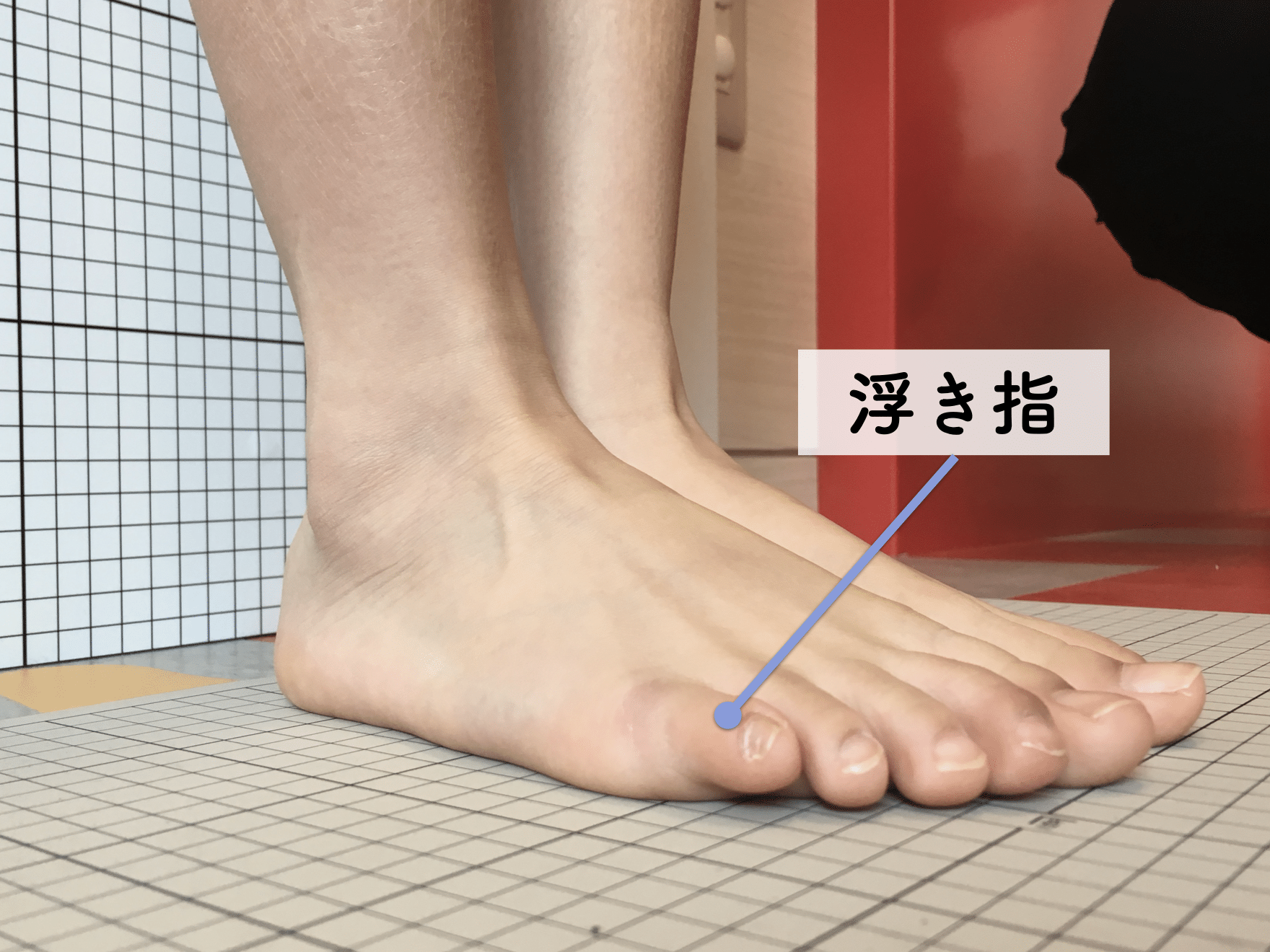
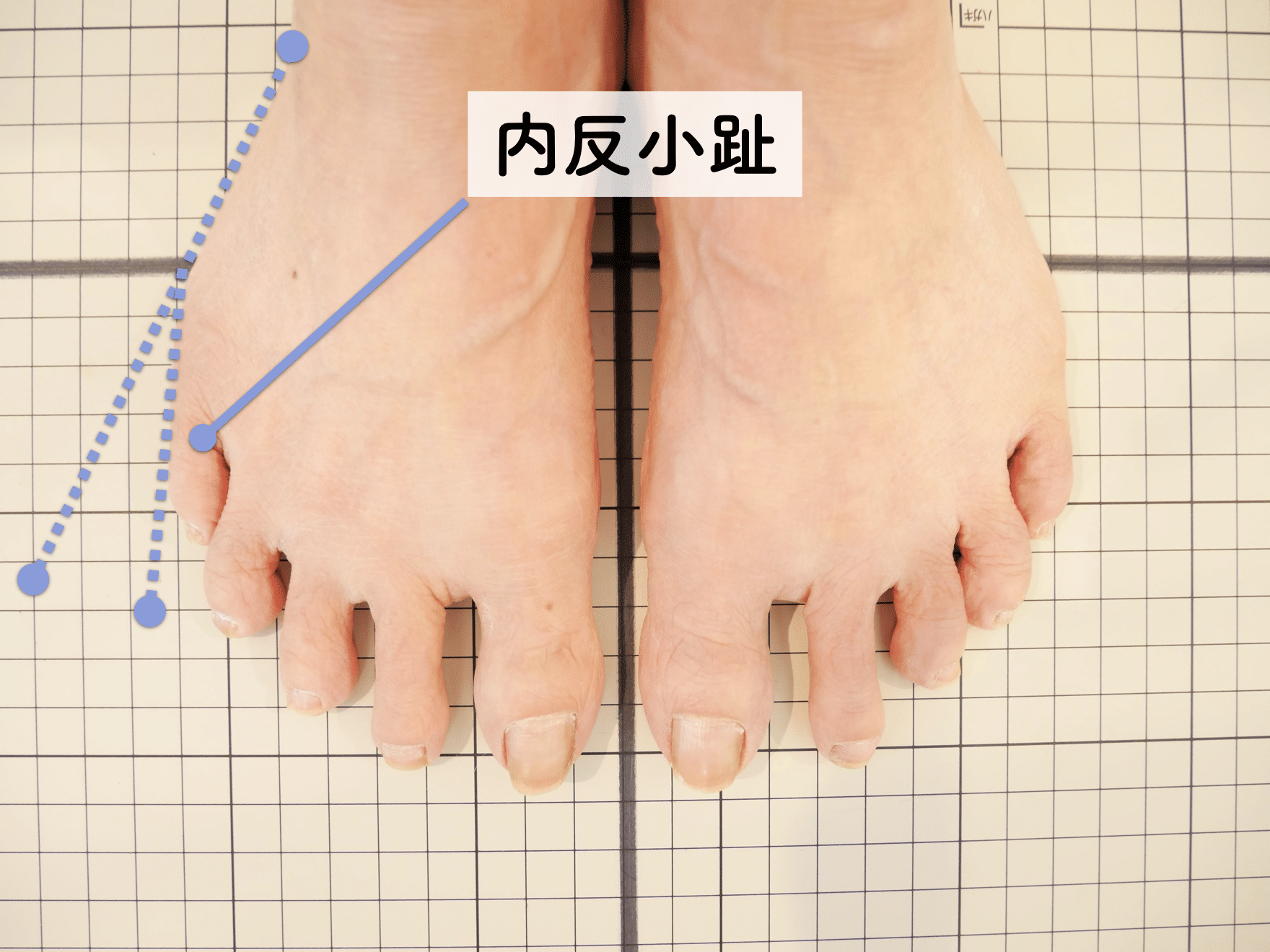
- 小指が内側に曲がっていないか?(内反小趾)
- 小指の付け根にタコができていないか?
- 小指の爪が消失・変形していないか?
▶︎ 小指の「パー」ができない人は要注意です。
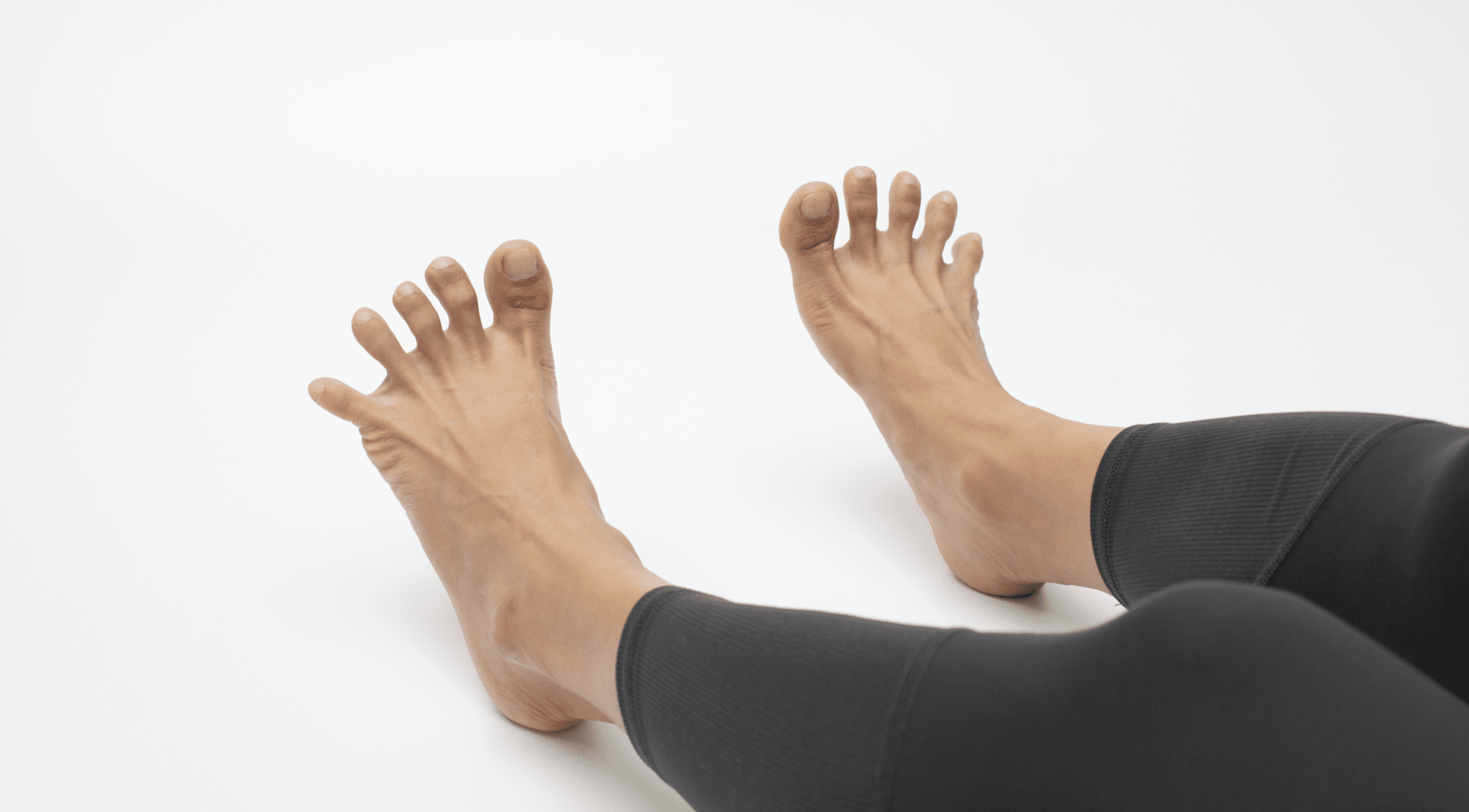
小指を“開く”“使う”ことができない状態は、外側バランスの破綻を意味します。
2|足首のラインを撮ってみる ——「くの字」「V字」なら注意
足首の骨や腱の並びは、後ろから見るとその人の重心の傾きを表しています。
以下の方法でチェックしてみましょう。
チェック手順
- スマホで両足の後ろ姿を撮影(スマホの中心を両足の真ん中に)
- 踵の中心 → アキレス腱 → ふくらはぎの中心を直線で結ぶ
- そのラインがまっすぐ地面に垂直かどうかを確認
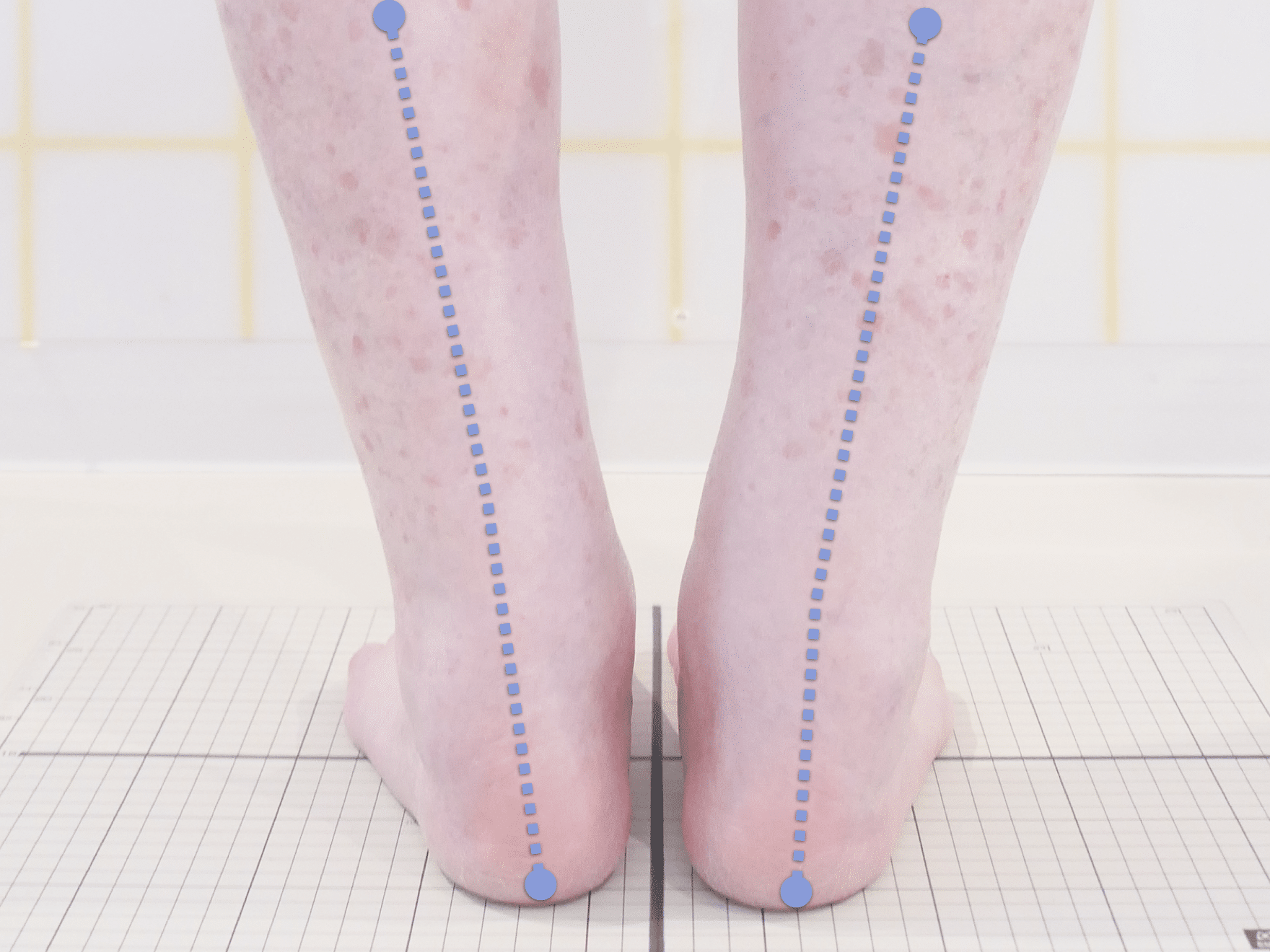
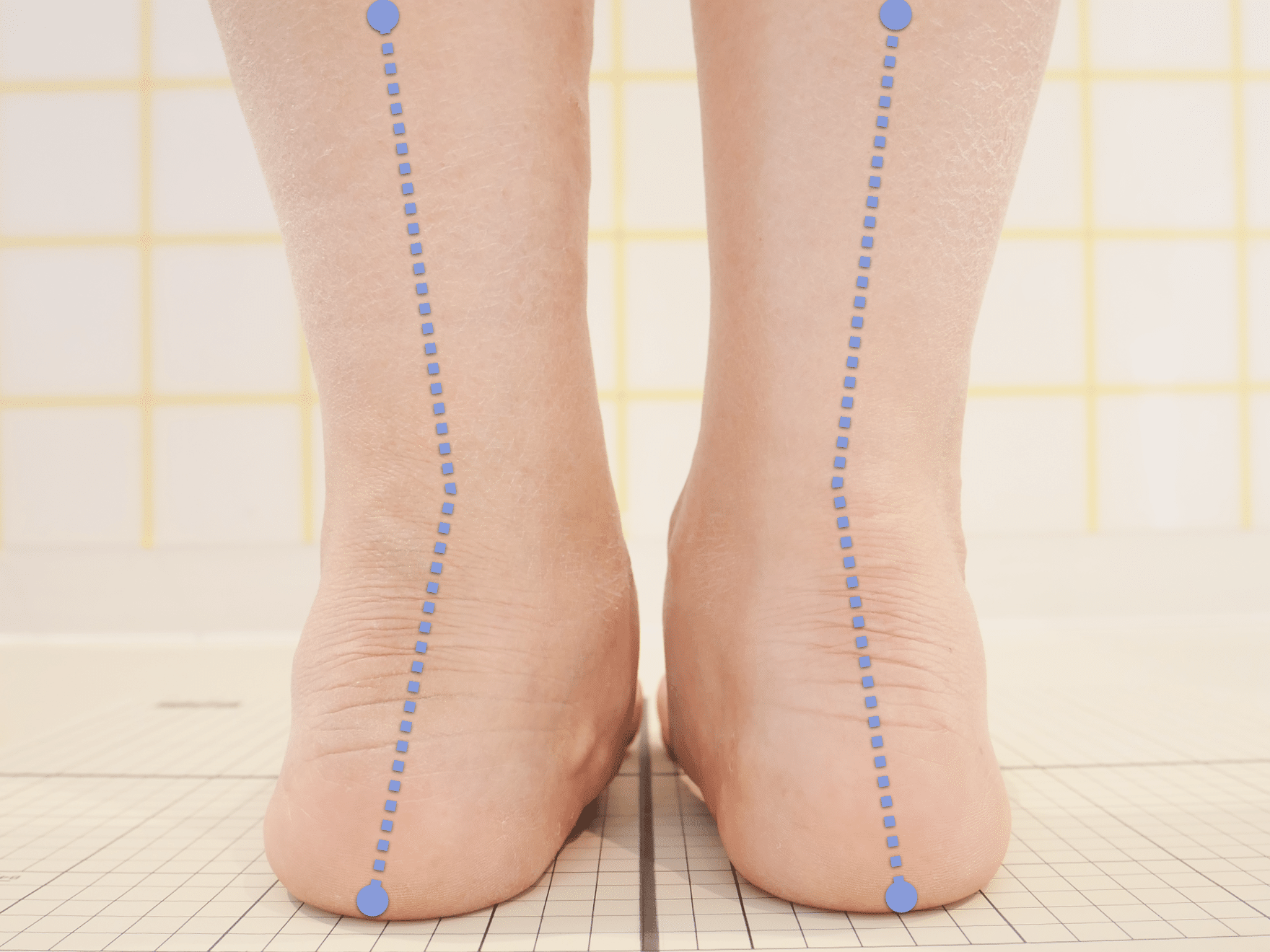
よくあるズレのパターン
- V字に見える:回外足(外側重心が強く、捻挫しやすい)
- くの字に見える:外反足(骨格のズレが生じている可能性)
こうしたズレがあると、無意識に足が内側にひねられやすく、靱帯へのストレスが常にかかっている状態です。
3|靴の“擦り減り方”から歩き方を診断する
靴は、あなたの「足のクセ」をそのまま写し取ってくれる“地図”のようなものです。
靴底や甲の状態を観察することで、捻挫を招きやすい歩行パターンを見つけることができます。
以下のサインがあれば要注意
- 靴底の外側だけが異常にすり減っている
- 靴の踏み返し部分のシワが「ハの字」に寄っている
- 靴のベロ(タン)が外側にズレている
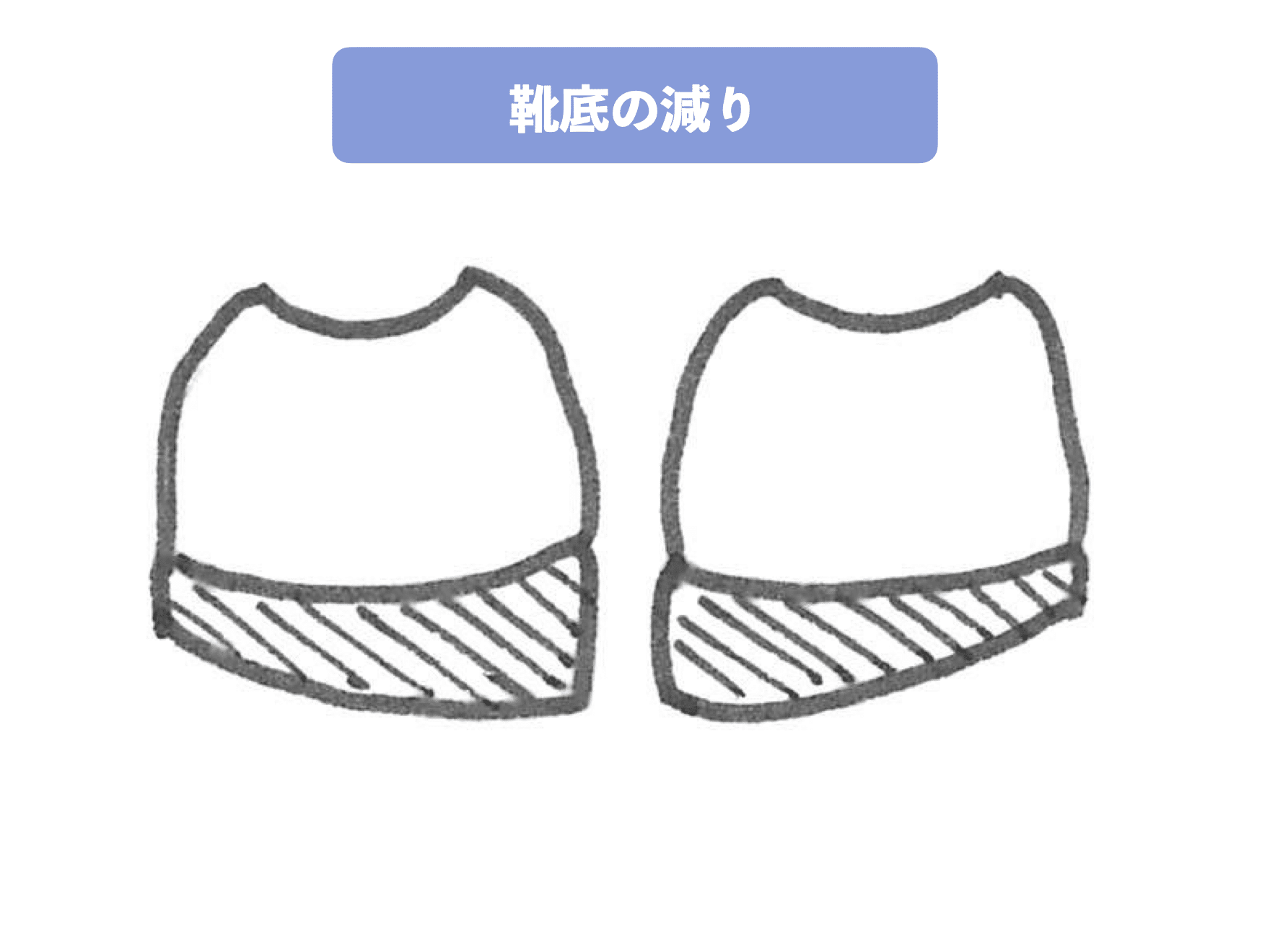
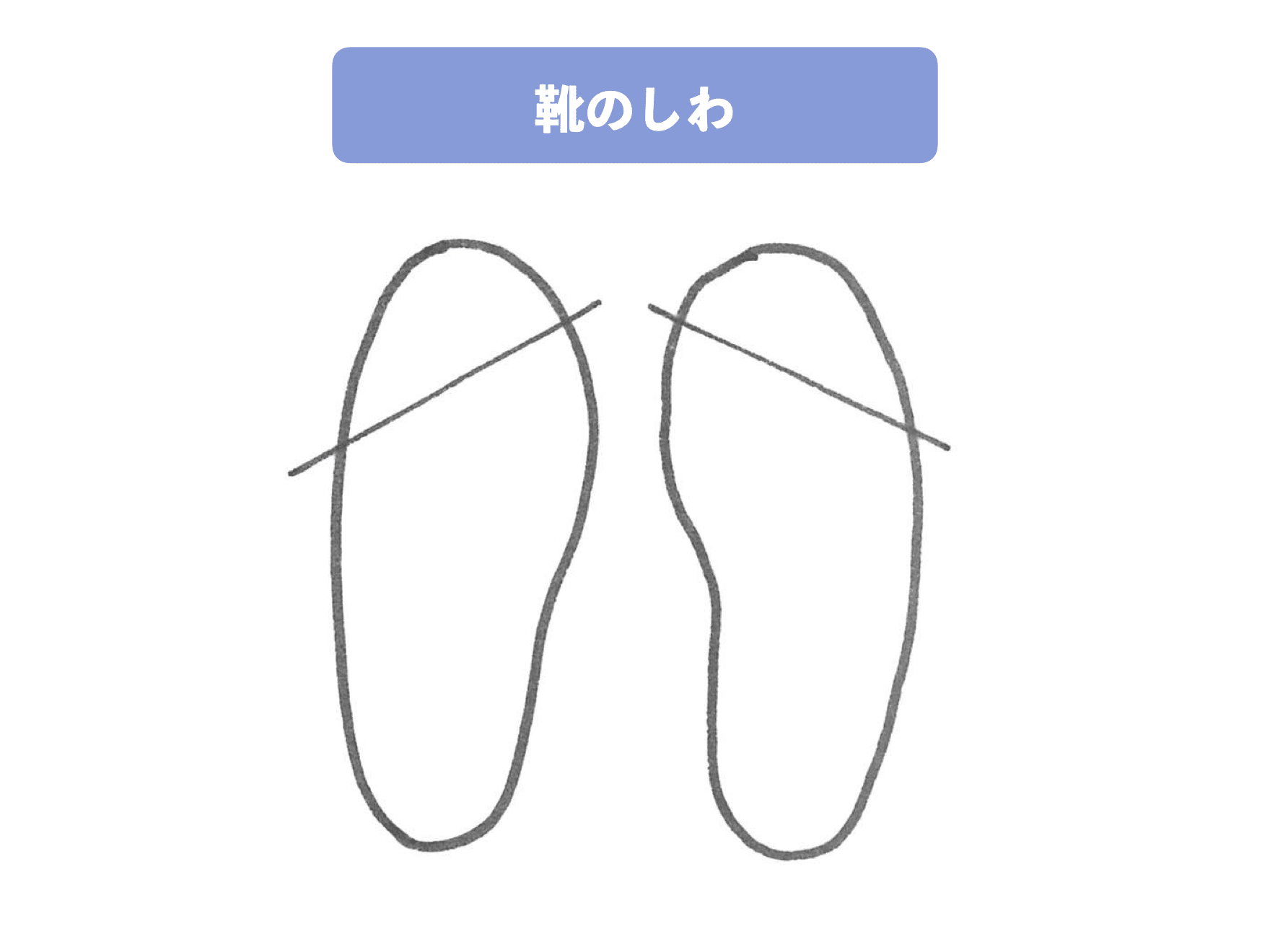
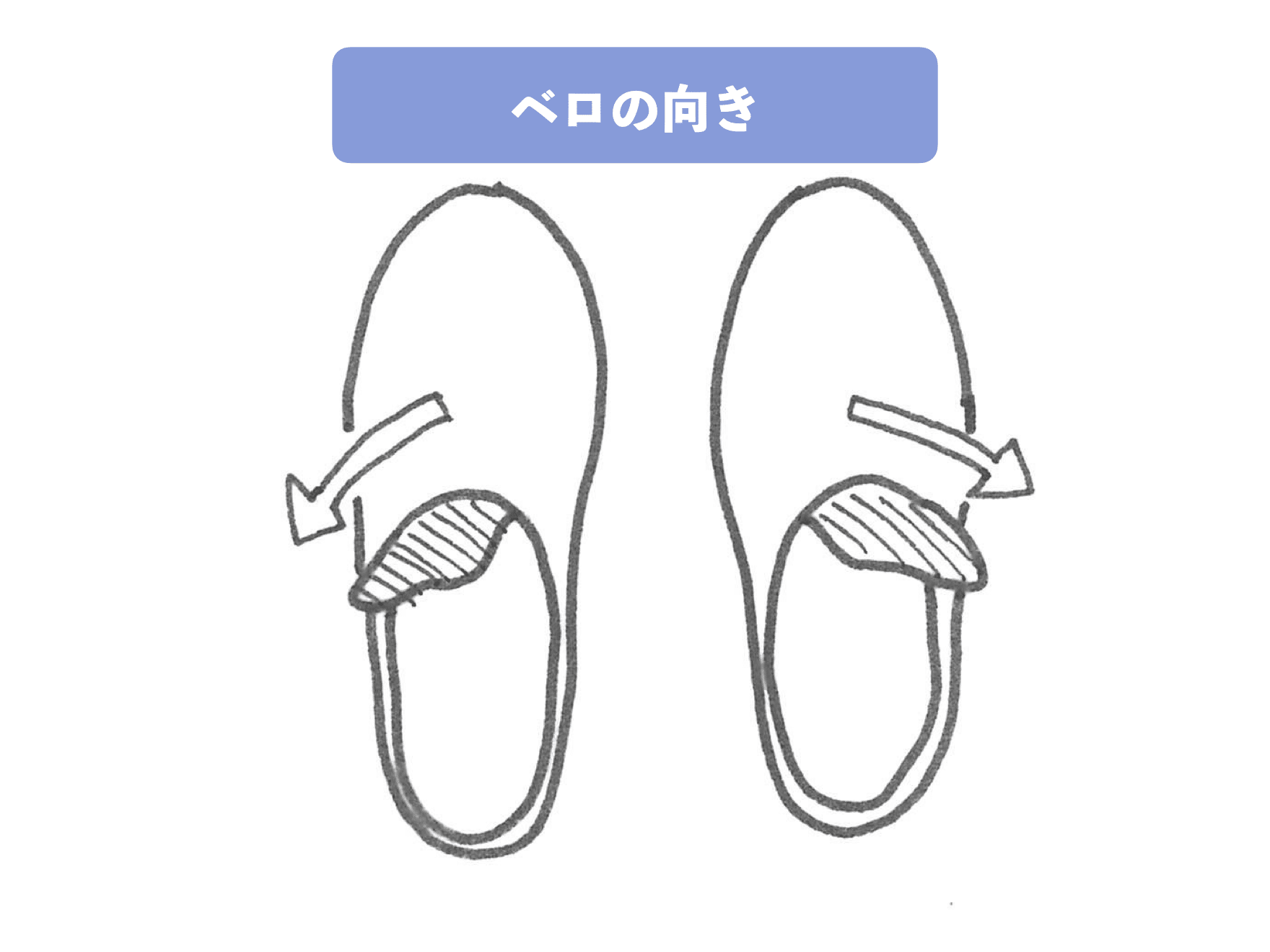
これはすべて「足の外側に偏った重心が続いている」サイン。
足首にかかるトルク(ねじれ)も偏るため、結果として靱帯が損傷しやすい構造が常に再現されてしまいます。
なぜ今、足のセルフチェックが必要なのか?
捻挫というと「一時的なアクシデント」と思われがちですが、
実際には「すでに捻挫しやすい足の構造だった」ことに気づかず生活を続けている人が多くいます。
- 病院での画像診断(レントゲン・MRI)は損傷の有無を確認するための手段
- しかし、なぜその損傷が起きたのか?という“構造的背景”までは診てくれない
だからこそ、「自分の足のクセ」に気づくことが予防の第一歩なのです。
【体験談】足首をくじいてから2年間…“ある習慣”で変わった私の歩行と生活
ところが75歳のとき、下り坂で愛犬を守ろうとして転倒し、足をくじいてしまいました。骨折は免れたものの、その後2年以上の通院が続き、足首の痛みは歩くたびに気になりました。リハビリや処方された薬で少しずつ落ち着いてはいきましたが、以前のように自由に歩ける状態ではありませんでした。
散歩を再開した矢先、今度は階段でつまづき、左ひざと足首を強打。歩行がつらくなり、家の中では家具に手を添えて移動する生活に。外出はタクシー、近距離でも杖が必要になりました。
その頃から、足首だけでなく膝や腰にも違和感が出るようになり、「このままでは一人で暮らせないかもしれない」と家族も心配し、関東と九州を行き来して支えてくれました。
そんなとき、足指と歩き方に視点を向ける考え方を知り、専門家に相談することにしました。診てもらう中で、小指が内側に曲がり、踏ん張りにくい状態になっていることが分かりました。
そこで、足指をゆっくり動かす体操や、滑りにくい足元環境づくりを日常に取り入れてみました。テレビを見ているとき、お風呂上がり、散歩前など、無理のない範囲でコツコツ続けたところ、歩くときの不安が少しずつ減っていきました。
80代を迎えた今では、散歩も以前より楽しめるようになり、市の「いきいき元気体操」にも参加できるほど日常が前向きになりました。愛犬とも1時間ほど歩く時間を大切にしています。年齢を重ねても、足元を見直すことで生活が変わるということを、いま実感しています。
足指の研究から生まれた「環境づくり」という視点
足指研究所では、20年以上の臨床経験と、東京大学・石井直方名誉教授と実施した観察研究を通して、
「足指が使いやすい環境が整うと、姿勢・重心の安定性に関わる“変化傾向”が見られることがある」
という視点を大切にしています。
足指は本来、「広がる・伸びる・接地する」という生理的な動きを持ちますが、
靴・靴下・床の滑りやすさなどによって、その働きが阻害されることがあります。
私たちは、
「どうすれば日常で足指が動きやすい環境を作れるか」
という点を中心に開発と研究を続けています。
【研究データ|足指・姿勢・筋活動の観察記録】

2020〜2022年、東京大学・石井直方名誉教授の指導下で実施。
延べ96名を対象に、以下の構造的特徴の推移を多角的に観察しました。
- 足指の動き・配置
- アーチ構造
- 姿勢指標
- 体幹支持筋・口腔周囲筋・下肢筋の活動傾向
“足指が使いやすい環境づくり”を行った際、
足指・姿勢・呼吸に関連する筋活動などに構造的な変化傾向が見られました。
【足指が使いやすい体へ|4つのアプローチ】
日常で“足指が働きやすい環境”をつくるための基本ポイントです。
1. ひろのば体操(足指をゆるやかに伸ばす)
2. 靴の見直し(足指が押しつぶされない設計)
3. 小股歩き(足指が自然に使いやすい歩き方)
4. 室内環境の調整(滑りやすい床・スリッパを避ける)
【YOSHIRO SOCKS|構造とものづくり】
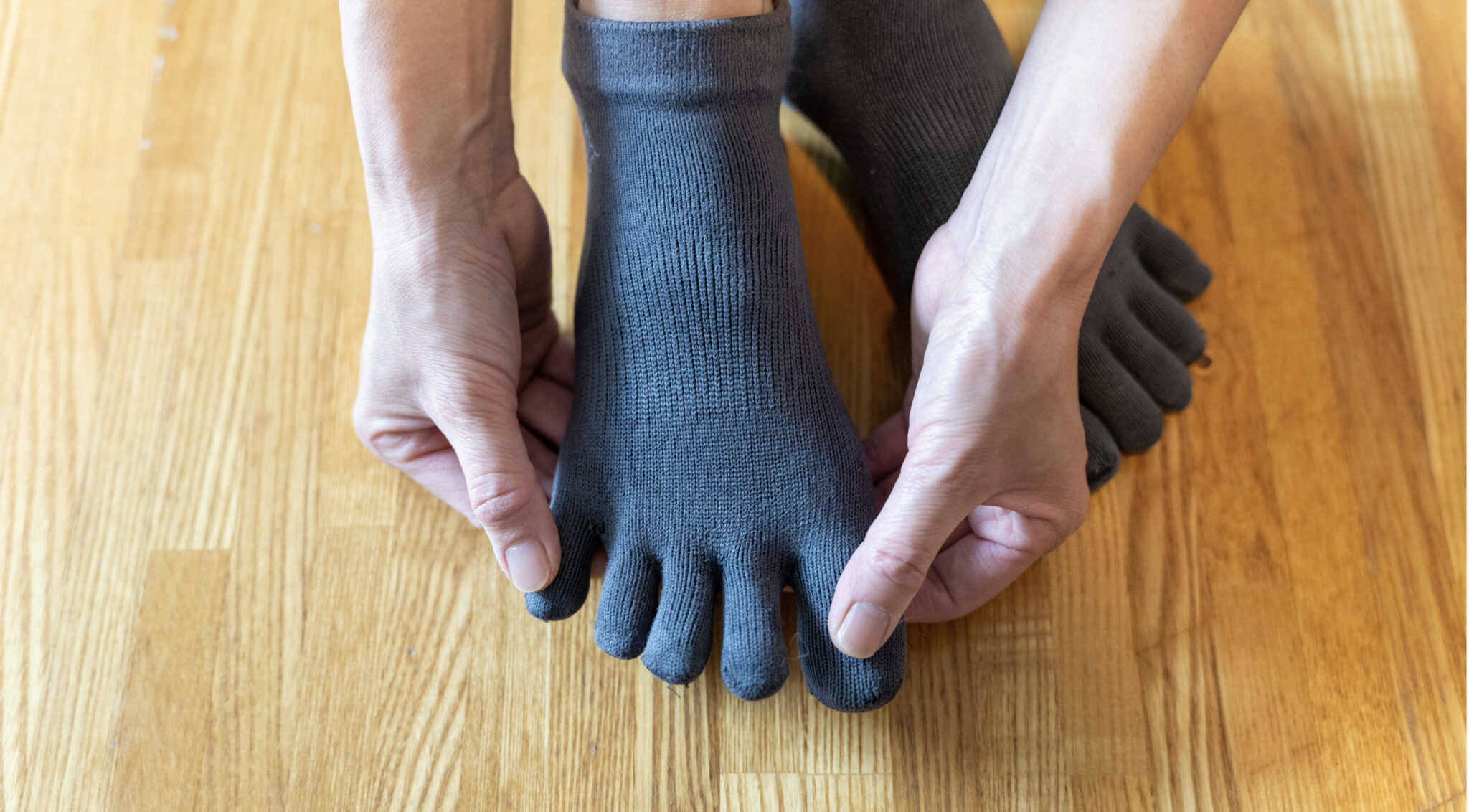
——足指が使いやすい“環境づくり”をめざした生活用品
足指の働きを妨げる「環境」そのものに着目し、
奈良の専門工場とともに、糸・密度・摩擦・張力などを精密に検証してきました。
● 構造のポイント
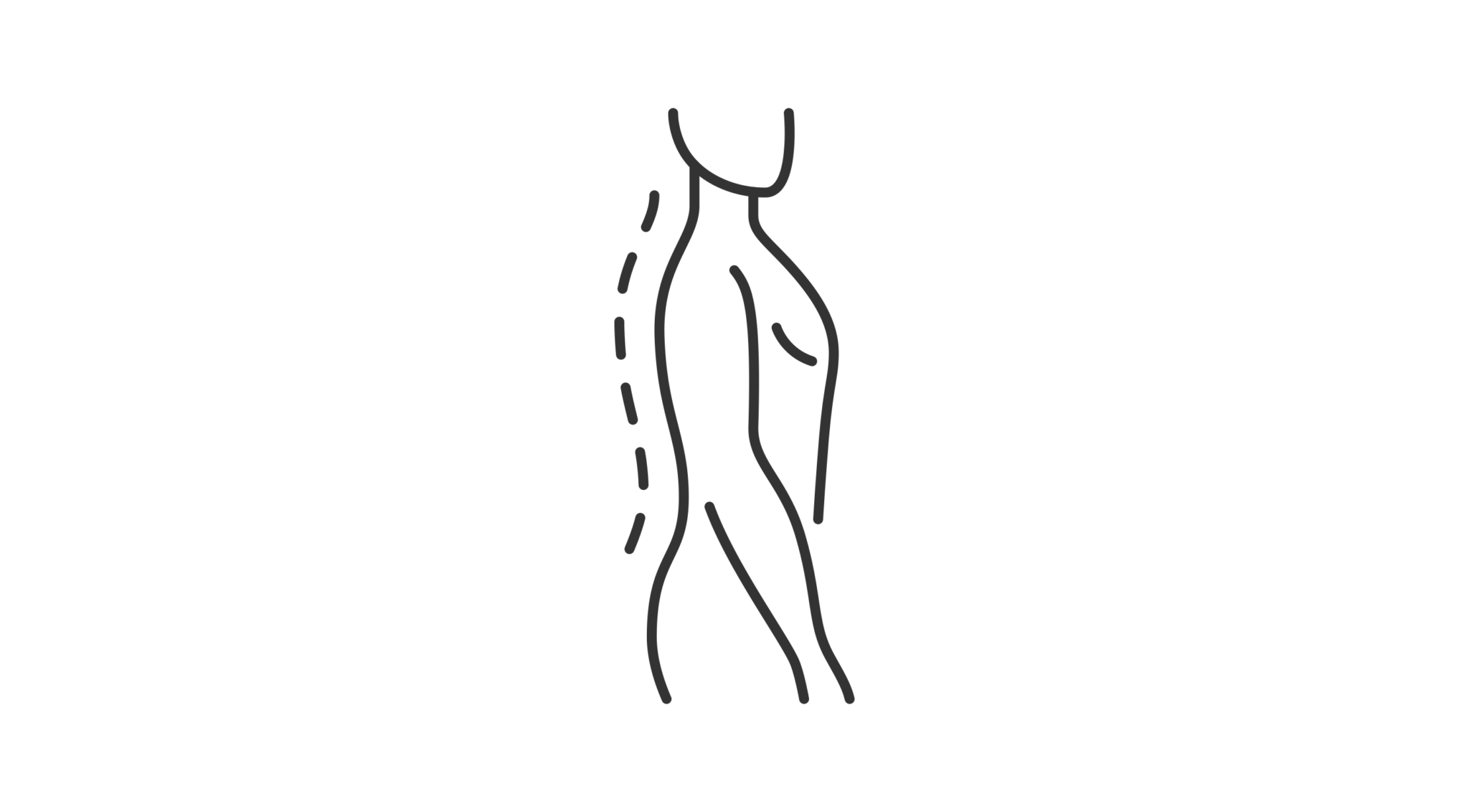
姿勢の安定性に配慮した
摩擦構造
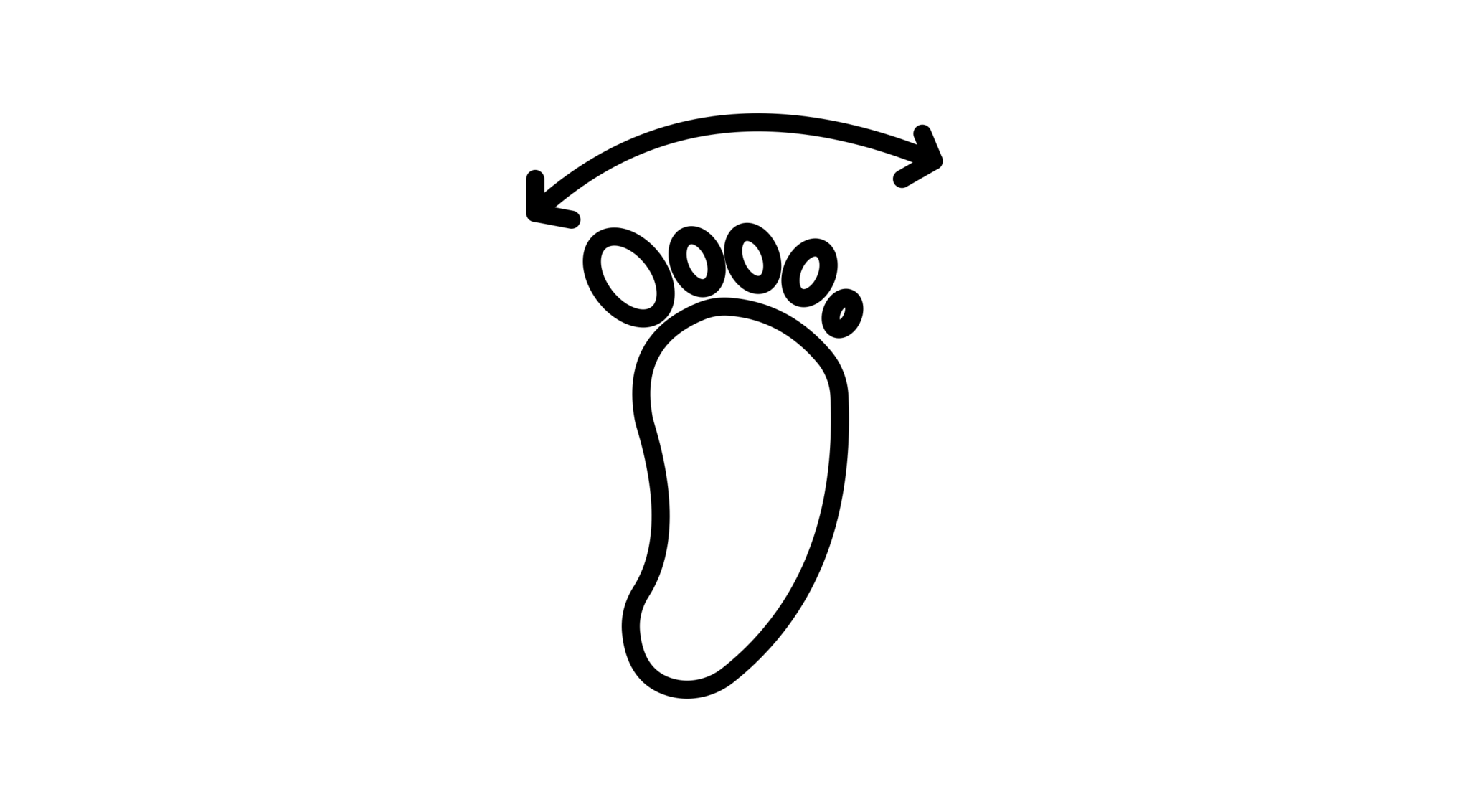
自然な足指の開きを支える
立体フォルム
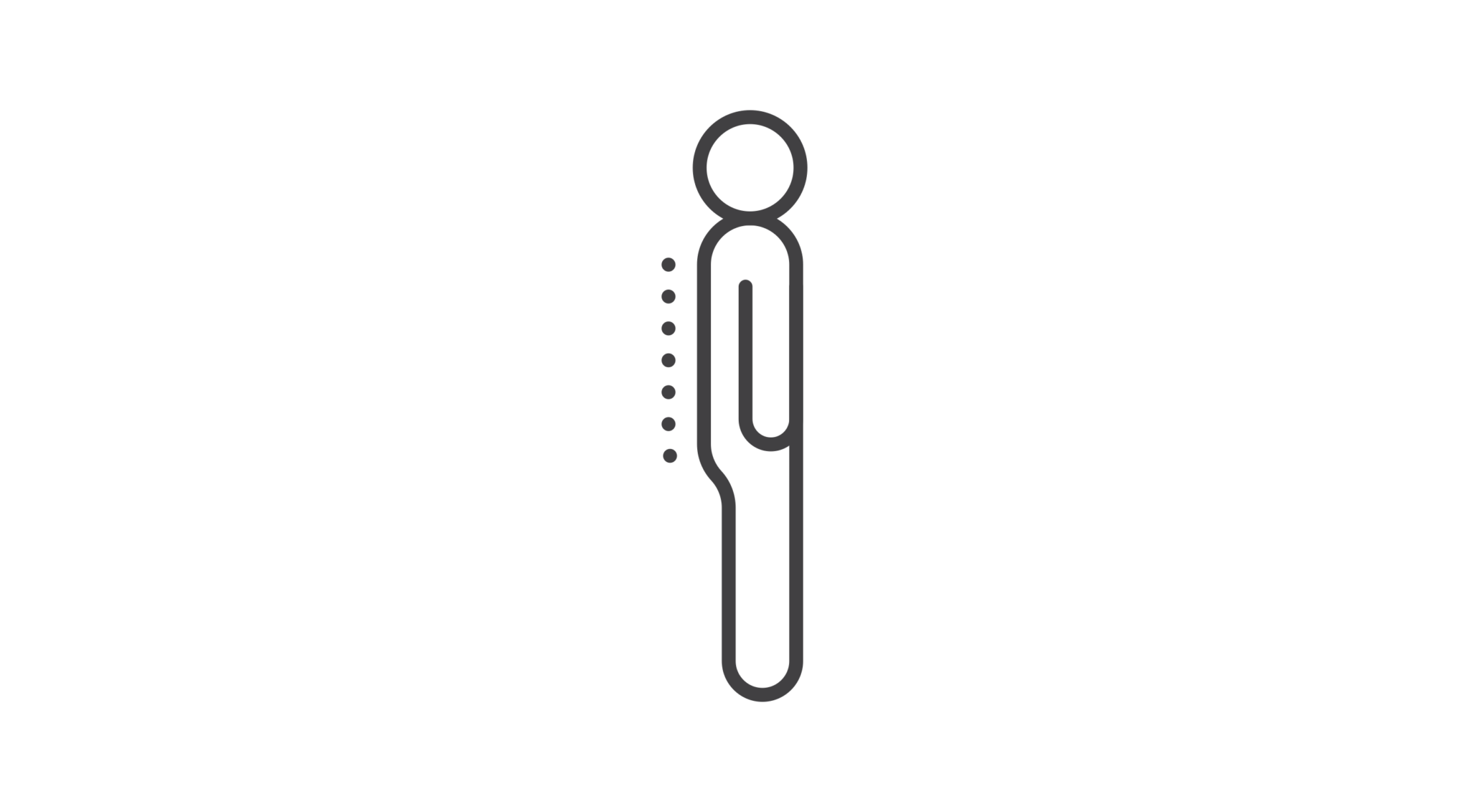
重心バランスを考慮した
密度・張力設計
.072-1024x566.jpeg)
“広げる・伸ばす”動きを引き出す
テンション配置
.063-scaled.jpeg)
開帳・扁平傾向に配慮した
縦横方向テンション
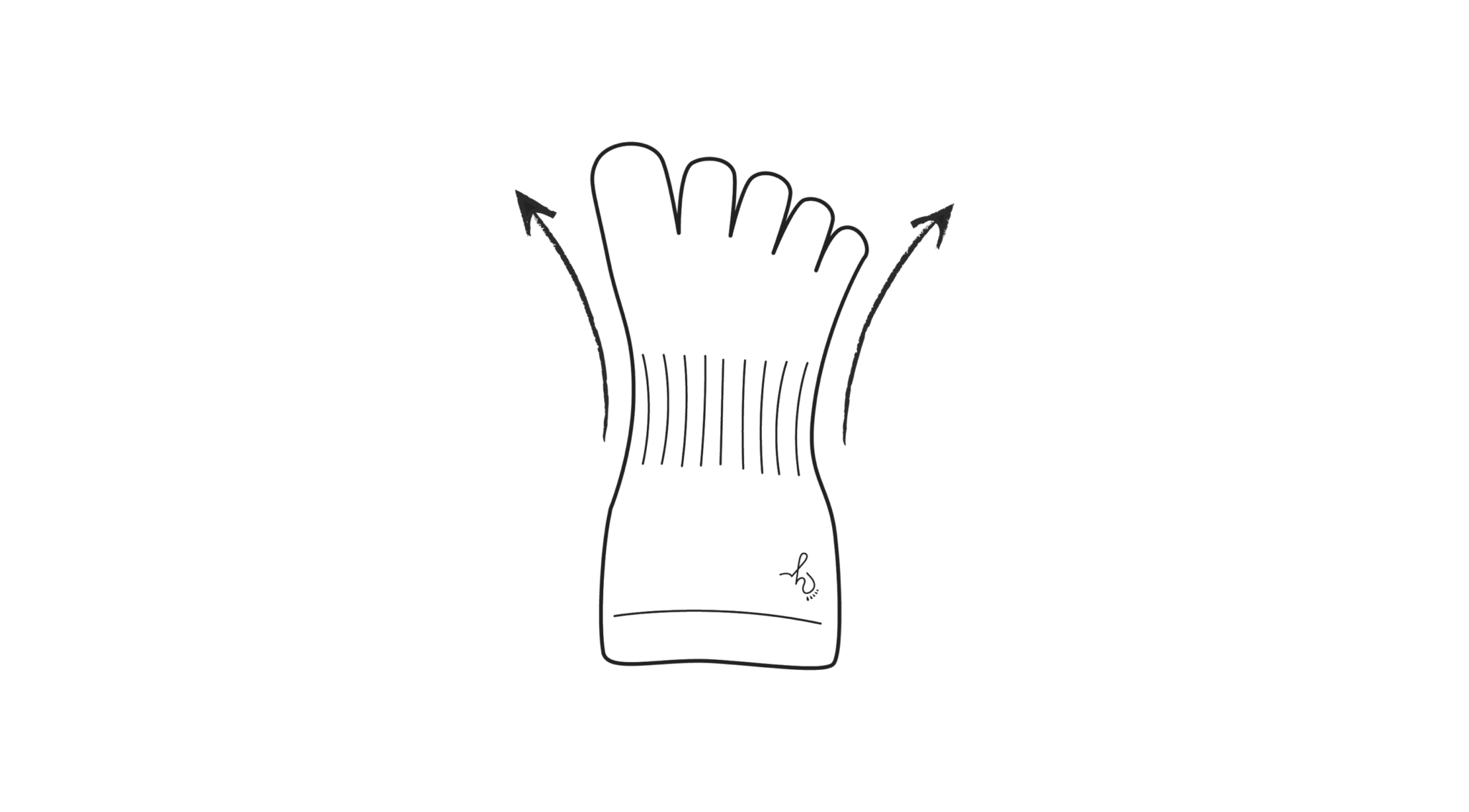
母趾〜小趾が整列しやすい
張力バランス
※ いずれも医療的効果を示すものではなく、あくまで「足指が働きやすい状態をサポートする生活用品としての構造」の説明です。
● 製造のポイント

日本製
.067-1024x566.jpeg)
高密度
.068-1024x566.jpeg)
極薄
.065-1024x566.jpeg)
高耐久
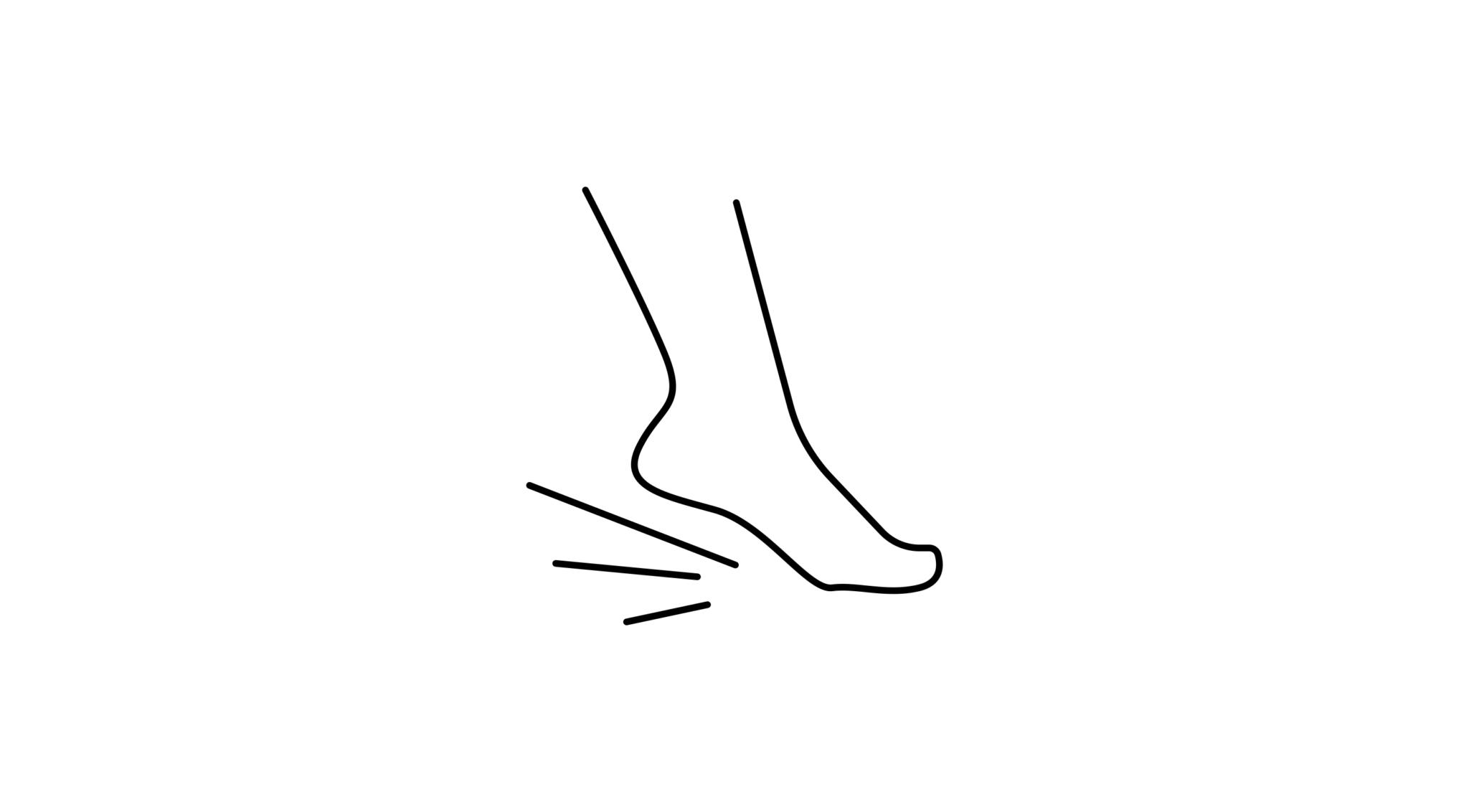
高グリップ
.064-1024x566.jpeg)
吸湿・速乾
- 日本製:専門工場が ±1mm 単位でテンション管理
- 高密度:700nmクラスの極細繊維
- 極薄:約2mmの軽さと安定性
- 高耐久:生活用品としての強度
- 扇形フォルム:足指が自然に広がりやすい形状
参考文献
1. 外反母趾の機能解剖学的病態把握と理学療法.湯浅慶朗.理学療法 第31巻 第2号 2014.2 P159-165
2.『足指をそらすと健康になる』湯浅慶朗/著 PHP研究所 2014.6
3.『たった5分の「足指つかみ」で腰も背中も一生まがらない!』湯浅慶朗/著 PHP研究所 2021.6
4.Sprained ankle. American Academy of Orthopaedic Surgeons. http://orthoinfo.aaos.org/topic.cfm?topic=A00150. Accessed May 25, 2017.
5.Maughan KL. Ankle sprain. http://www.uptodate.com/home. Accessed May 25, 2017.
6.Kaminski TW, et al. National Athletic Trainers' Association position statement: Conservative management and prevention of ankle sprains in athletes. Journal of Athletic Training. 2013;48:528.
7.How to care for a sprained ankle. American Orthopaedic Foot & Ankle Society. http://www.aofas.org/footcaremd/how-to/foot-injury/Pages/How to Care for a Sprained Ankle.aspx?PF=1. Accessed May 25, 2017.
8.Safran MR, et al. Sprain. In: Instructions for Sports Medicine Patients. Philadelphia, Pa.: Saunders Elsevier; 2012. https://clinicalkey.com. Accessed May 25, 2017.
9.Porter DA, et al. Principles of rehabilitation for the foot and ankle. In: Baxter's The Foot and Ankle in Sport. Philadelphia, Pa.: Mosby Elsevier; 2008. https://clinicalkey.com. Accessed May 27, 2017.

.040-1-scaled.jpeg)